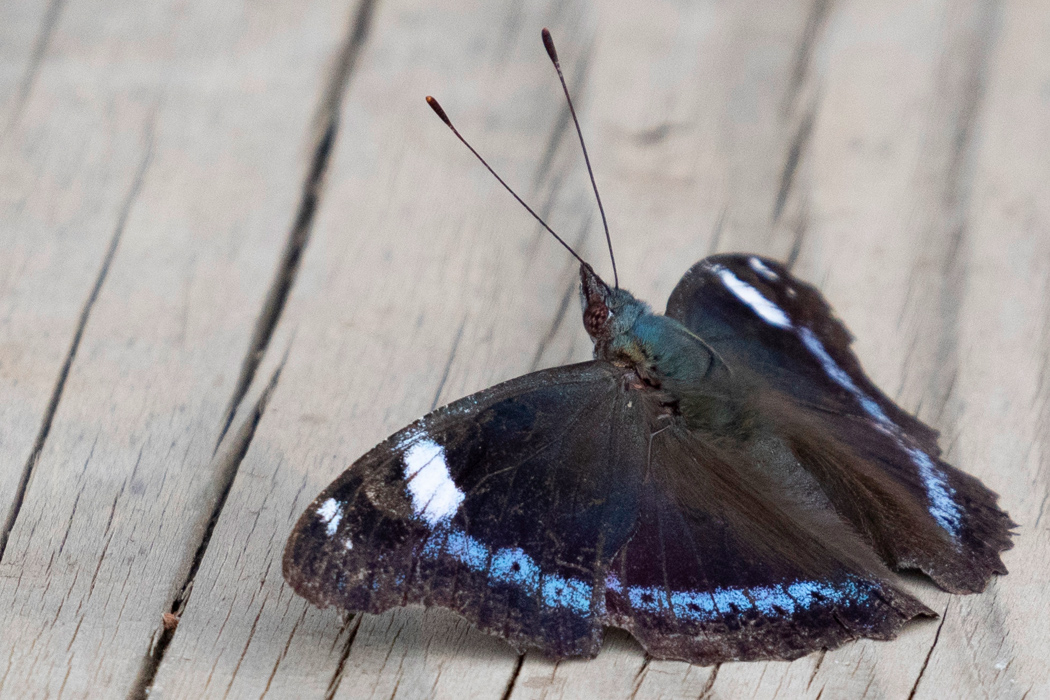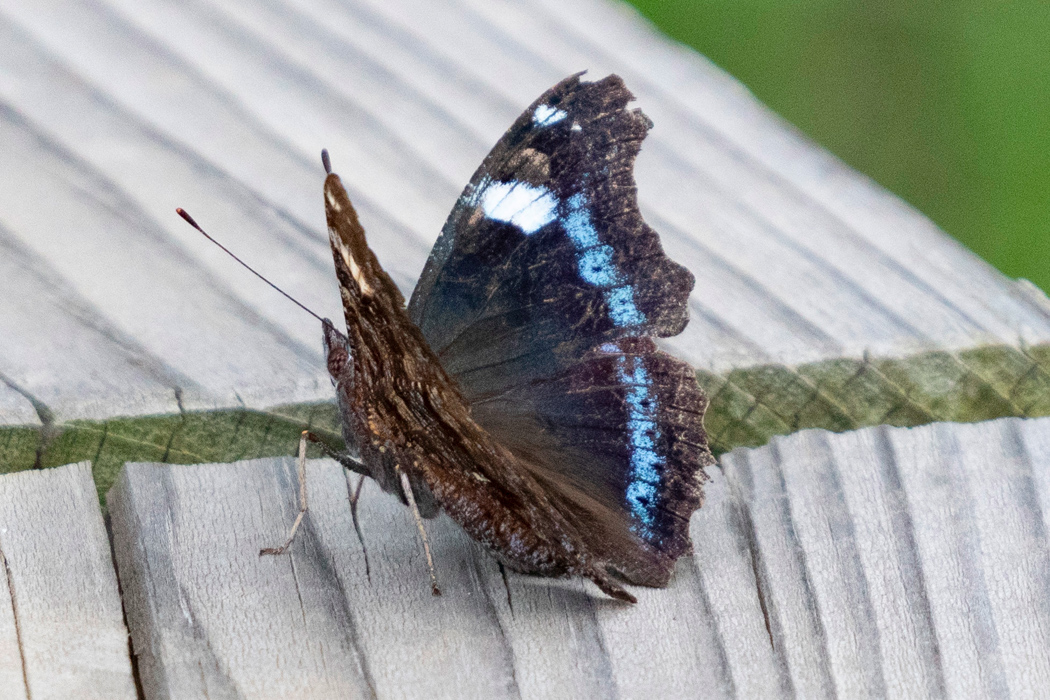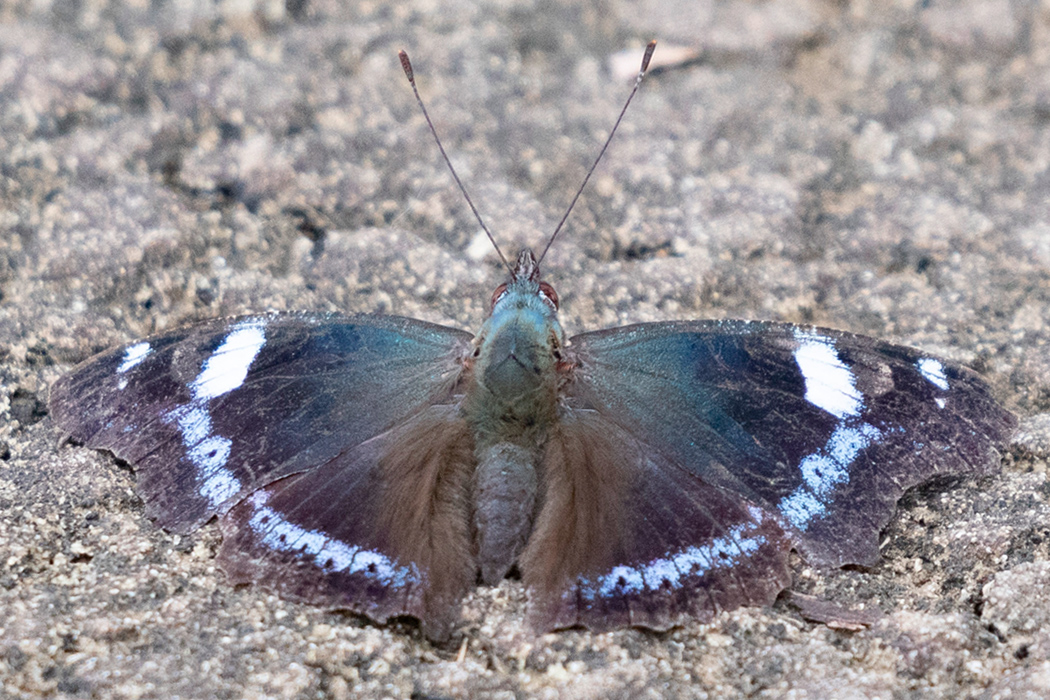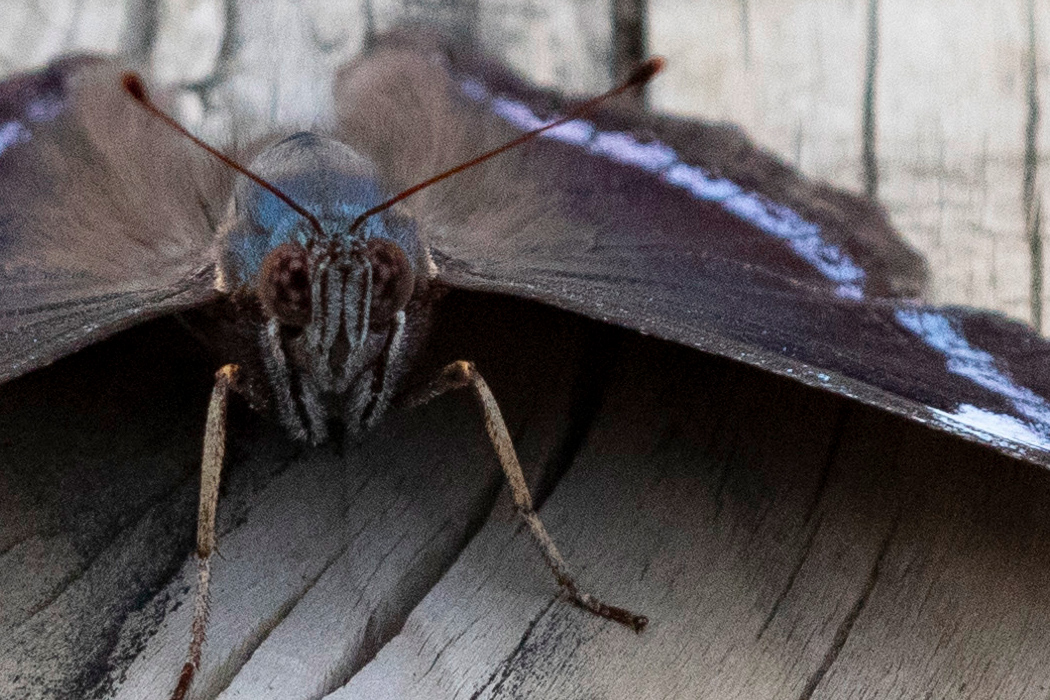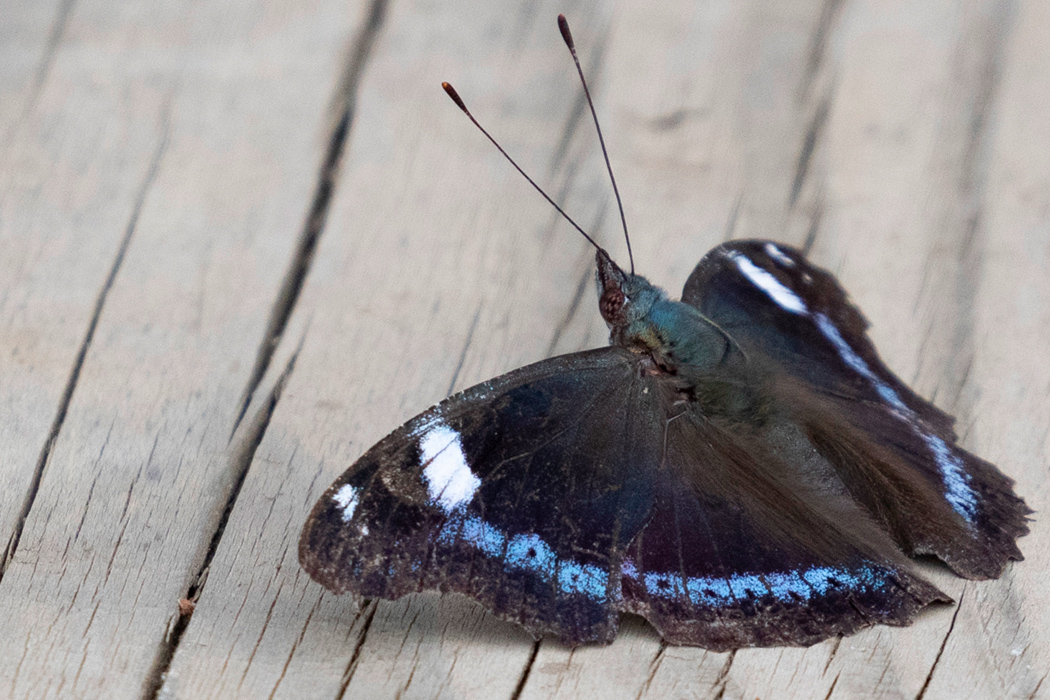
Blue admiral
The lapis lazuli band is beautiful.
| Scientific name | Kaniska canace |
| English name | Blue admiral |
| Japanese name | 瑠璃立羽 |
| Classification | Insecta |
| Classification details | Lepidoptera Nymphalidae |
| Full length | 25-45mm |
| Distribution | Southern Hokkaido to Nansei Islands |
Characteristics
A Nymphalidae with a deep navy blue band with a light blue band. At the end of the forewing, the light blue band breaks off and becomes a whitish spot. Male and female are the same color. The underside of the wings has a subdued color that resembles the surface of a tree or fallen leaves. They sometimes perch on tree trunks or on the ground, but when they sense danger, they quickly fly away.
This butterfly is the only extant of the genus Blue admiral.
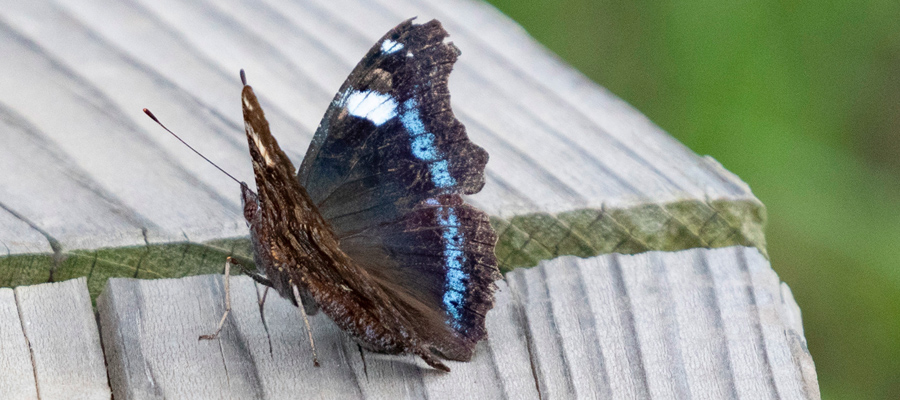
Ecology
It lives in forests and parks. It hatches 2-3 times from summer to autumn. Males have territories and perch on the ground or on rocks with their wings spread to monitor other males. Adults perch on trees and suck sap. The larvae live on the undersides of the leaves of Sartoribara, which they feed on. 68 whitish protrusions protrude.
Habitat
I found it spreading its wings on a wooden path in Katakura Castle Ruins Park, Hachioji City. The whole area around it seems to be a territory, and when it gets close to about 3m, it takes off and jumps to 10-odd meters ahead, and when it leaves, it returns to the original place. It closes and spreads its wings for a few seconds after landing, so you can observe the other side, but it quickly sticks to the ground. Other Nymphalid butterflies were also seen in the woods of the park.
Pictures
Introducing a picture of Blue admiral.
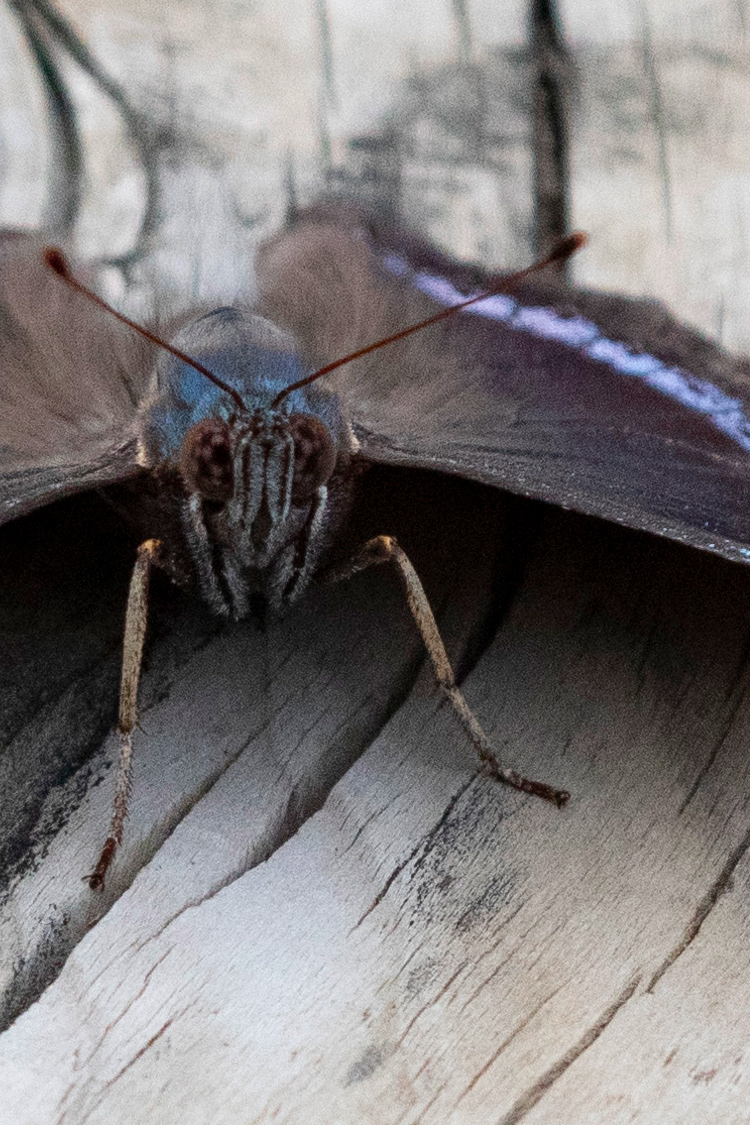
Picture book
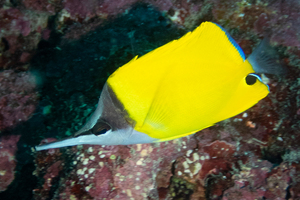
Yellow longnose butterflyfish
Yellow body with long long snout......ead more.
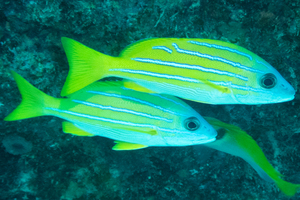
Bluestripe snapper
yellow body with 4 pale lines running......ead more.

Brown Hawk-Owl
It has round and expressive yellow eyes.......ead more.

Japanese gecko
Change body color according to surrounding color.......ead more.

Mute Swan
There is a hump at the base of the beak.......ead more.
